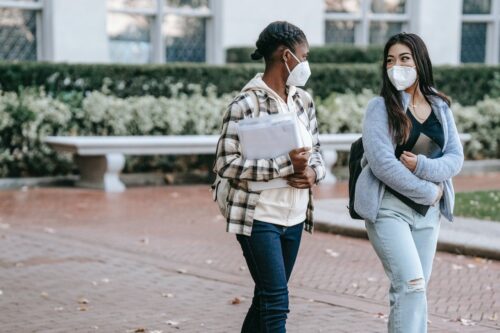
COVID-19 forced schools to close their doors in early 2020. Students were sent home and told that the schools would not re-open until the social distancing mandates were lifted. Teachers scrambled to communicate with students online, while parents tried their best to manage jobs and supervise their kids at the same time.
When COVID-19 infection rates were down, schools took the chance to re-open, trying to keep staff and students safe with masking, handwashing and distanced desks. Government mandates forced schools to close sporadically as the public infection rates climbed, making students bounce back and forth between their homes and classrooms.
This has happened for years, and the education of the student body has suffered because of it. A COVID-19 Science table believes that the province’s public school students are two to three months behind their usual learning schedule because of the pandemic.
As a parent, you may be wondering: what will close that learning gap? These are some potential solutions.
Online School
Many in-person schools struggled to teach their students online. This can be attributed to the fact that their class plans were not originally designed to be virtual. An accredited online school is different. These courses are designed to teach students in a virtual medium, and they’re extremely effective at doing so.
Online school courses can help bridge the learning gap for students, especially those that are close to graduating high school. They can use the educational platform to take courses like MHF4U to get their prerequisites for specific university programs. They can also use the platform to retake courses they’ve already completed to boost their grades — this could help them achieve essential prerequisites or bring up their GPA.
Online school programs offer flexibility. Students can manage their coursework at their own pace and on their own schedule. If they want to complete these courses during their time off in the summer, they can. If they want to take a year to finish the course, they can do that, too.
A Victory Lap
One potential solution that has been suggested by politicians is a victory lap (a grade 13). The additional grade will give students more time to catch up academically and prepare for their ventures into post-secondary education or the workforce.
A Gap Year
Students could take a gap year. A gap year is an intentional (often year-long) break between high school and post-secondary education. Graduates often take gap years to find work, travel abroad and try new experiences that they couldn’t manage while attending school.
A gap year can also give students the opportunity to bridge the learning gap they experienced while in high school. These are just some activities they could do during their gap year:
- Take online school courses to get essential prerequisites for university/college programs.
- Spruce up skills that will become essential in post-secondary education, like writing papers, citing resources and learning proper time management.
- Undergo workshops and build up portfolios they need for specialized programs.
- Audit university courses they’re interested in.
- Enroll in immersive volunteer programs or internships that relate to the fields they want to enter.
The learning gap is not an insurmountable problem. Taking a victory lap, a gap year or doing school online are great solutions that can help students catch up and close the learning gap.
